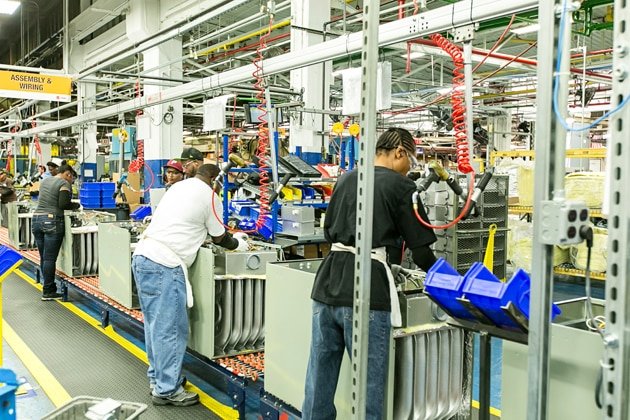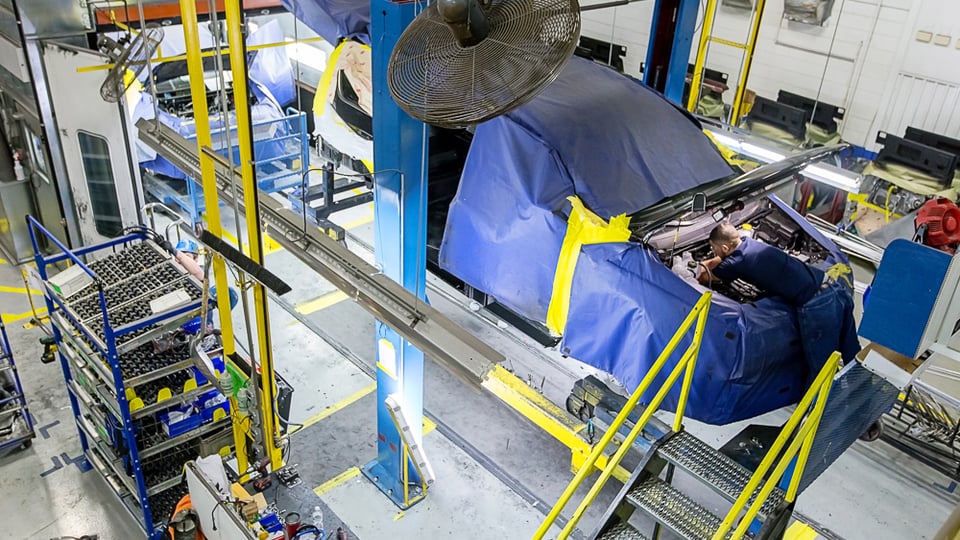Predictions for Material Handling
E-commerce sales are expected to grow to more than $400 billion in the next several years, per Internet Retailer magazine. MAPI predicts manufacturing production will increase 2.4% in 2017. The National Association of Manufacturers (NAM) shows that in their most recent data, manufacturers contributed $2.17T to the US economy in 2015. NAM also says that for every $1.00 spent in manufacturing, another $1.81 is added to the economy – the highest multiplier effect of any economic sector. They also say that for every one worker in manufacturing, there are another 4 employees hired elsewhere.
Because of e-commerce sales, warehouses and distribution centers need automation to keep up with the demand. In 2017, DCs will be forced to evaluate their workflows, update outdated ones and innovate inefficient processes.
As for the manufacturing sector, the focus on lean processes and improving employee efficiency has helped companies become more competitive globally. Within their assembly and distribution processes, in 2017, manufacturers will continue to eliminate waste, improve productivity and boost efficiencies within picking, packing and distribution processes. This will foster continued growth and address the shortage issue of qualified, skilled workers.
Here are what we think is going to happen in 2017 in the material handling industry:
- Rise of the Machines and Industry 4.0: Industry 4.0 encompasses intelligent machines that will transform manufacturing by connecting sensors, machines, pallets and IT. Industry 4.0 incorporates the Internet of Things (IoT) that will expand into the warehouse to reach IoT-labeled pallets containing lists of contents, dates of packing, destination, etc. for better tracking of raw materials and improved shipping efficiencies. Machine-to-machine communications will offer status of equipment, helping with preventive maintenance schedules.
- Made in America Movement Continues Strong: According to the Reshoring Initiative, the millions of US jobs going overseas has stopped as consumers embrace the “Made in America” movement. In fact, Ford recently canceled plans for building a $1.6B plant in Mexico and instead launched an expansion in their Michigan manufacturing facility.
- Consolidation of Multi-Channel into Omni-Channel: More companies will be moving towards an omni-channel fulfillment model, having a centralized view of inventory with fulfillment from stores or DCs. This model will allow customers the added convenience of ordering and returning items however they see fit, regardless of where the item was purchased.
- Pop-up Fulfillment Locations will augment e-commerce order fulfillment during peak seasons. Getting products close to the customer facilitates same-day and next-day shipping, along with cutting transportation costs. Customers get their products quicker while retailers don’t have the huge outlay of costs for a mega-warehouse.
- Mobile Will Be Everywhere: Consumers want convenience – the ability to find an item online, research prices, select vendor, pay for the item and schedule delivery – from a single device has swept the retail world. This trend will continue to grow as mobile devices are deployed in the warehouse for checking order status, equipment throughput, labor usage and more – all with the goal of improving customer service.
- Autonomous Vehicles: More and more shippers will use driverless trucks in their last mile delivery operations. Small driverless forklifts and autonomous robots will become more prevalent on factory floors and in distribution centers for certain material handling operations. This will reduce labor requirements, speed fulfillment and grow bottom line revenues.
- Focus on Picking Operations: As picking is one of the biggest consumers of labor in the warehouse, managers will focus on improving picking operations with FIFO (First in, First out) methods that keep products with expiration dates from going out of date.



